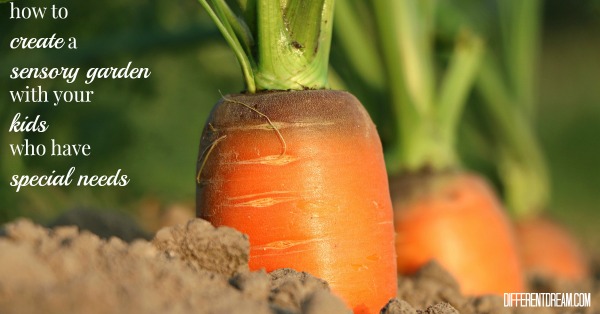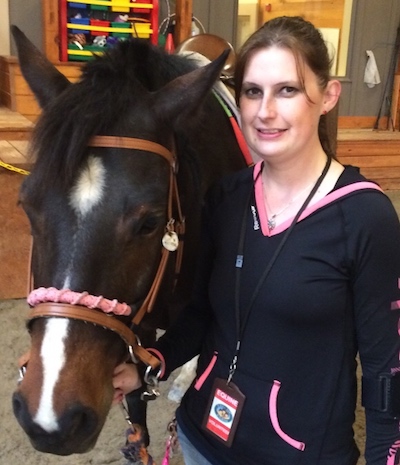How to Create a Sensory Garden for Kids with Special Needs

Want to create a sensory garden for and with your kids this summer? Guest blogger Trish Shaeffer is here with step-by-step directions to get your summer off to a green thumb start!
How To Create a Sensory Garden for Kids with Special Needs
Now that the weather is getting nicer and winter is behind us, it’s a great time to start thinking about outdoor activities for the whole family.
One of those activities is gardening. Gardening is for the whole family and any age group, and is great for kids with special needs. It teaches children a lot of lessons as well–from the circle of life, to patience and responsibility, and even colors and time. For a child that is learning to read or spell, the labels you make for you garden provide another opportunity to practice those skills. My son who has CP loves to plant the seeds in the small pots and water them. It gives him a sense of accomplishment because he can actually do something on his own. Gardening is also great for my twins who have sensory issues. The dirt in their hands gives them tactile input and the plants also provide their own input with touch and sight. Even the creepy crawlers in your garden provide a teaching opportunity and sensory feedback.
So why not create a sensory garden the whole family can enjoy together? A sensory garden can include everything from bright, colorful and fuzzy flowers to vegetables and fragrant herbs. Each plant in the garden should have unique features.
I don’t claim to have a green thumb at all and it makes for a challenge to get our garden started. We have lot of trial and error, but it’s a great sense of accomplishment for the whole family when hard work pays off and our garden grows.
A vegetable garden is a great way to also save money. Seeds are very cheap and you get a lot of plants out of one seed packet. The seeds themselves provide a learning experience and feedback. Have you child touch and observe each seed and try to have them guess which vegetable the seed came from.
If you want to save money on pots for your seedlings, just look around the house. An old box lid, egg carton, old jars, empty yogurt containers, and the like are all great containers for sprouting seeds. Just make sure to punch a drainage hole in the container.
To make a greenhouse for your new plants, place plastic wrap over jars and cups, and secure with a rubber band. This will not only help your plants stay warm, but will also keep moisture in from the soil which means less watering.
Place your seedlings in a place where your kids can check on the plants everyday and note the progress of their garden, watching it grow and transform. I can honestly say that, in spite of my lack of a green thumb, one week after we planted seeds, our garden started to sprout. My kids are excited to watch their garden grow and I hope your children will be, too! Have a happy and healthy garden experience.
Have you tried to create a sensory garden with your children? Leave your favorite tips in the comment box if you like!
Do you like what you see at DifferentDream.com? You can receive more great content by subscribing to the quarterly Different Dream newsletter and signing up for the daily RSS feed delivered to your email inbox. You can sign up for the first in the pop up box and the second at the bottom of this page

By Trish Shaeffer
Trish Shaeffer mom of 3 active boys, a 9-year-old and 5-year-old twins who were born 2 months early and have special needs. She’s a peer supporter for Parent to Parent and volunteers with the United Cerebral Palsy Network, Special Olympics, and the United Way. She’s also an equine volunteer at Leg Up Farm. She’s married to her best friend and biggest supporter, Chris Shaeffer.
Subscribe for Updates from Jolene
Related Posts
How Do I Discern if Medication Is Best for my Child’s Behavioral Needs?
Heather Braucher explains her answer to the question, “How do I discern if medication is best for my child’s behavioral needs?”
How Do I Teach my Kids to Interact with People Who Have Disabilities?
Jolene gives practical pointers for people who ask, “How do I teach my kids to interact with people who have disabilities?”
Choosing Acceptance and Advocacy as Parents of Kids with Disabilities
Choosing acceptance and advocacy as parents of kids with disabilities can be hard, but it’s necessary to our kids and to ourselves.






0 Comments